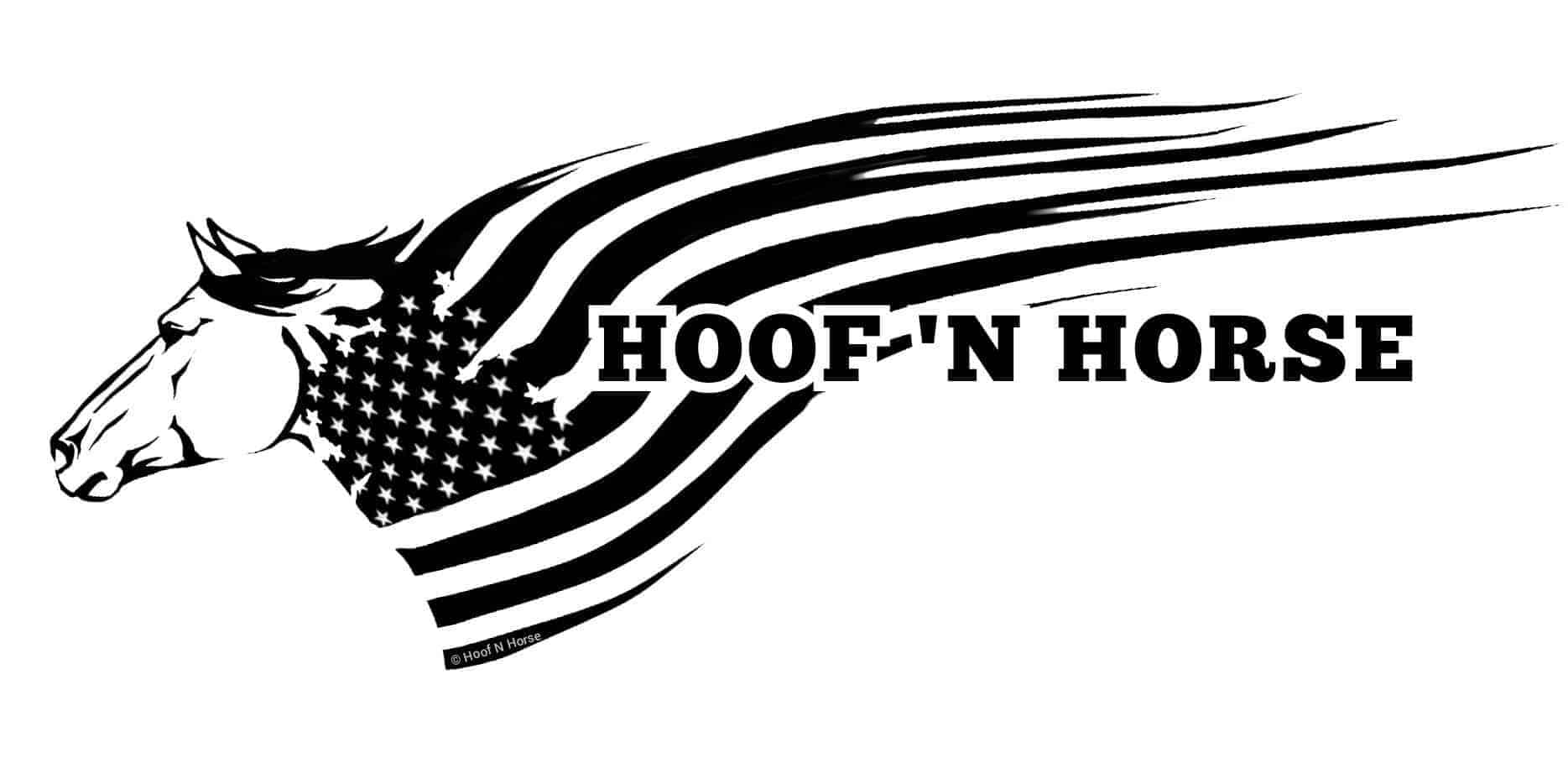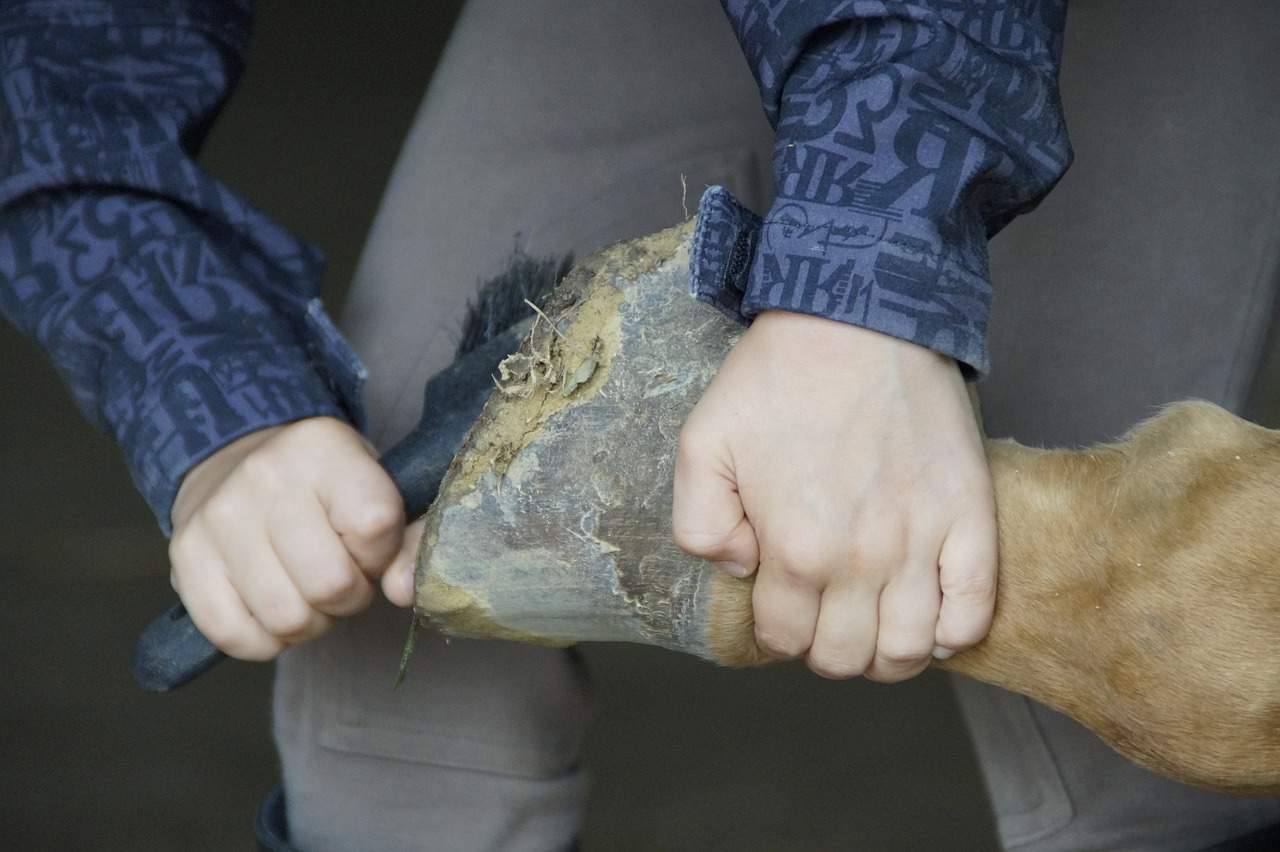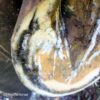The following is a true story from my own experiences (with a touch of dramatization):
A retired horse who has a history of abscesses suddenly goes lame.
He limps to the water trough, lays down next to the water trough, and becomes dehydrated next to the water trough.
He waits in despair for his handler to arrive, which she does in a timely manner.
After the help arrives, he’s reassured and begins to feel better when his painful concerns are addressed via wet food and stall rest.
It’s an abscess. For sure, beyond doubt.
But is it?
His situation improves slightly although he’s still noticeably tender on that one foot.
A short wait and the farrier pulls up. After a few tests, there’s no sign of an abscess in the hoof.
Well then, what could it be?
The horse is obviously in excruciating pain…
until they turn to look and he’s running in the field…
full gallop…up a hill…
More than likely, it was a simple bruise that he suddenly forgot about.
The end.
Funny thing about pain tolerance differing between individuals, isn’t it?
But now just so you know (and we won’t tell the horse) an abscess could potentially result from something simple like a bruise.
In this article, I’m answering the question: HOW DO I IDENTIFY A HOOF ABSCESS? So sit back, relax, and take a listen!
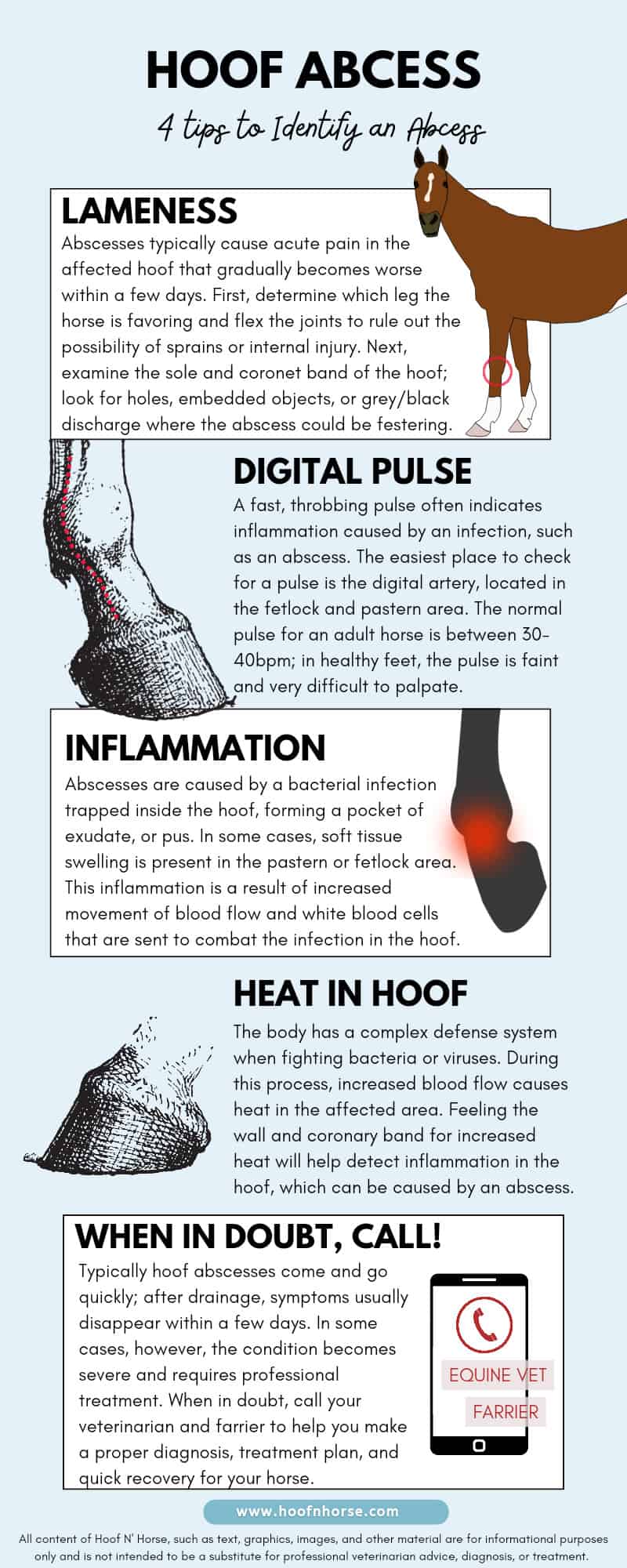
LAMENESS
Abscesses typically cause acute pain in the affected foot and gradually becomes worse within a few days. As an abscess develops, the accumulation of pus creates pressure which causes pain and severe lameness in the infected hoof.
Performing a simple evaluation helps show where and what the cause of lameness is.
First, determine which leg the horse is favoring and flex the joints to rule out the possibility of sprains or internal injury. Next, examine the soul and coronary band; look for holes, embedded objects, or gray / black discharge where an abscess could be festering.
DIGITAL PULSE
A fast throbbing pulse often indicates inflammation caused by an infection such as an abscess. The easiest place to check for a pulse is the digital artery, which is located in the fetlock and pastern area. The normal pulse for an adult horse is between 30-40 BPM; in healthy feet, the pulse will be faint and very difficult to palpate.
Finding the digital pulse only takes a little practice and anatomy knowledge. There are two grooves above the fetlock joint, one between the cannon bone and suspensory ligament, the second between the suspensory and flexor tendons, this is the best place to start for beginners. Read more in detail about finding digital pulse in this article by Equine Wellness.
INFLAMMATION
Inflammation is a result of increased movement of blood flow and white blood cells that the body sends to combat infection. When a horse has swelling around the pastern or fetlock area, and trouble bearing weight on that foot, this could indicate a severe abscess in the hoof.
Your veterinarian is be able to positively identify the cause and will usually start by taking radiographs. This helps rule out other possible causes, diseases or illnesses, and they can also prescribe anti-inflammatories such as flunixine meglumine (Banamine), Phenylbutazone (Bute), or Equiox.
HEAT IN THE HOOF
The body has a complex defense system when fighting bacteria or viruses. During this process, increased blood flow causes heat in the affected area. Feeling the wall and coronary band for increased heat will help detect inflammation in the hoof, which can be caused by an abscess.
An article by Horse Side Vet Guide shares a few tips on how to find heat in the hoof. First, use the back of your hand to feel for heat around the entire hoof wall and coronary band then compare the temperature with the opposite forefoot and the hind feet.
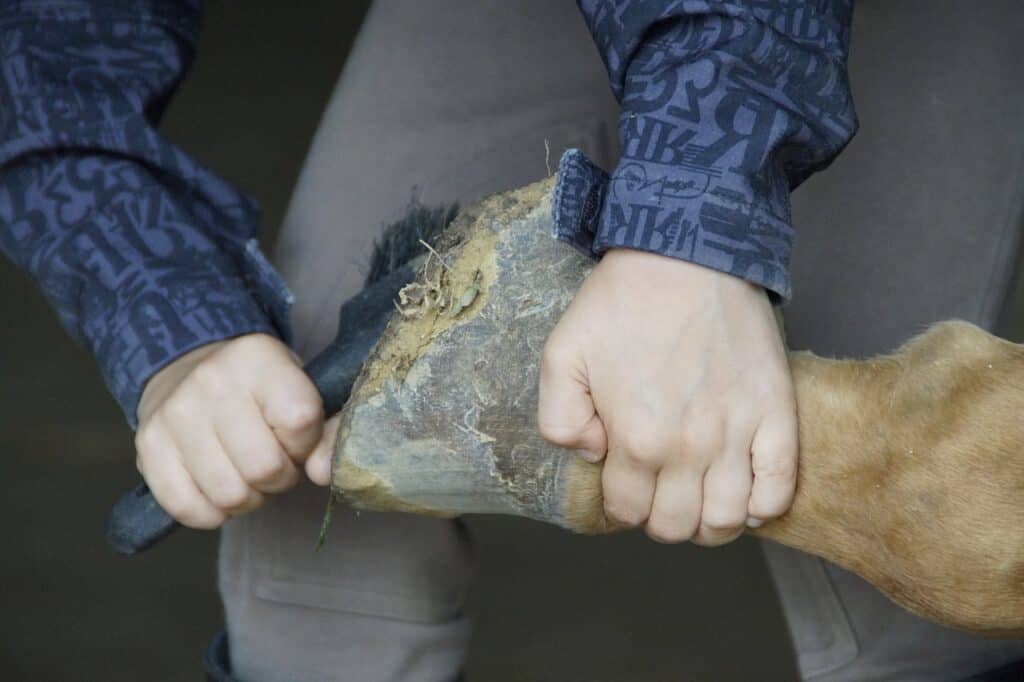
BONUS TIP
Hoof testers are commonly used to pinpoint abscess location within the hoof. They are an invaluable piece of equipment for initial assessment of lameness.
Anyone can use this tool, but your farrier or veterinarian will be able to determine quickly based on experience and the horse’s response when applying pressure around the hoof.
TAKE AWAY
Typically, abscesses come and go quickly; after drainage and treatment, symptoms usually disappear within a few days. In some cases, however, the condition becomes severe and requires professional treatment.
When in doubt, call your veterinarian and farrier to help you make a proper diagnosis and treatment plan for a quick recovery.
All content of Hoof N’ Horse such as text, graphics, images, and other material is for informational purposes only and not intended to be a substitute for professional veterinarian advice diagnosis or treatment.
